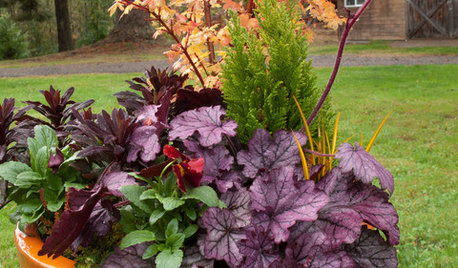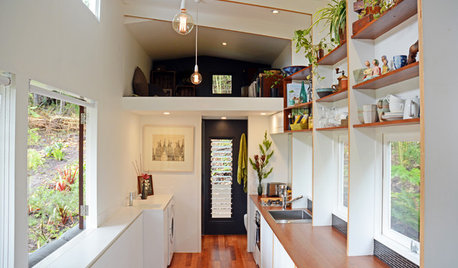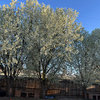soil apprentice?
steviewonder
17 years ago
Related Stories

HOMES AROUND THE WORLDHow Japanese Architects Have Built on the Work of Frank Lloyd Wright
The design philosophy of the U.S. architect, who worked for a time in Japan, has been kept alive by generations of Japanese architects
Full Story
FALL AND THANKSGIVING5 Container Gardens for Fall, the Holidays and Beyond
Make planting easy with a single container, year-round plants and a sprinkling of simple seasonal accents
Full Story
SMALL HOMESTiny Houzz: A Retractable Bed and Double-Duty Furniture Make It Work
Architecture graduates work with a builder to create a stylish tiny house with an efficient layout and a roomy feel
Full StoryMore Discussions









Skybird - z5, Denver, Colorado
bpgreen
Related Professionals
Cary Landscape Architects & Landscape Designers · Leawood Landscape Architects & Landscape Designers · Salisbury Landscape Architects & Landscape Designers · Harvey Landscape Architects & Landscape Designers · Wake Forest Landscape Contractors · Ellensburg Landscape Contractors · Gurnee Landscape Contractors · Mission Bend Landscape Contractors · Parkland Landscape Contractors · Pomona Landscape Contractors · Los Angeles Solar Energy Systems · Paradise Solar Energy Systems · Titusville Solar Energy Systems · Torrington Solar Energy Systems · Western Springs Solar Energy Systemsdavid52 Zone 6
digit
steviewonderOriginal Author
bpgreen
Skybird - z5, Denver, Colorado
david52 Zone 6
digit
cnetter
stevation
Skybird - z5, Denver, Colorado
stevation
david52 Zone 6
lnmca
Skybird - z5, Denver, Colorado
david52 Zone 6
bpgreen
digit
david52 Zone 6
digit
bpgreen
stevation
david52 Zone 6